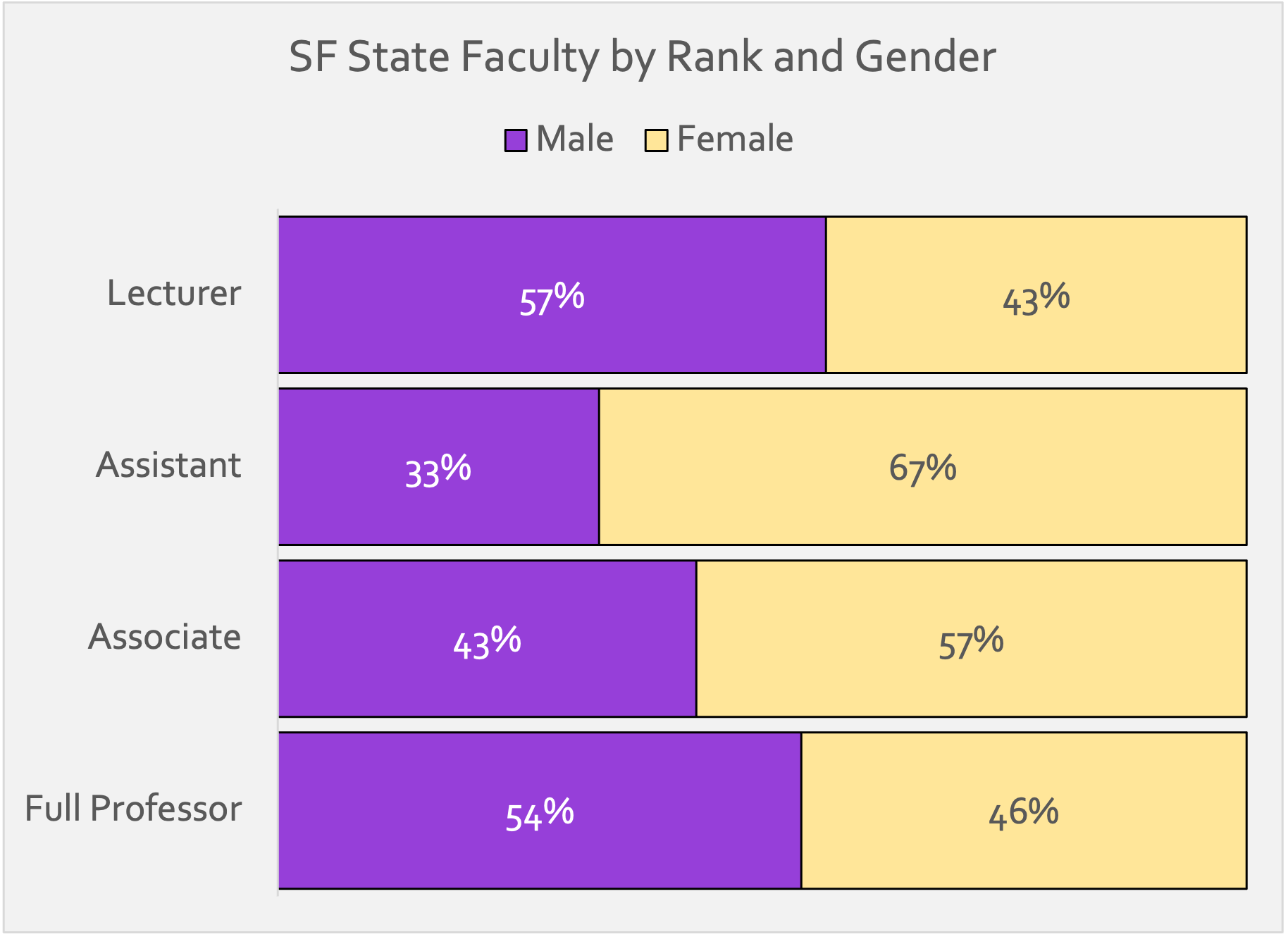SF State is a comprehensive, public, urban university that serves one of the nation’s most ethnically and culturally diverse student populations.
With more than 27,000 students, SF State has a long-standing commitment to attracting, retaining, and graduating a highly diverse student body. The Wall Street Journal's 2021 Best Colleges list ranks San Francisco State University in the top five nationwide for the “Environment” category. This category measures the diversity of a university’s community based on the racial and ethnic makeup of students and employees, the proportion of students who come from abroad, and the percentage of students who receive Pell Grants.
In 2012, San Francisco State University was designated by the U.S. Department of Education as an Asian American, Native American, and Pacific Islander Serving Institution (AANAPISI). To qualify for an AANAPISI designation, at least 10 percent of a university's undergraduate enrollment must be made up of students who are Asian American, Native American or Pacific Islander. In addition, 50 percent of the university's overall student population must receive federal need-based financial assistance such as Pell Grants or Federal Work Study. The Asian American and Pacific Islander Retention and Education (ASPIRE) program at SF State by grant funding for AANAPISI designated insitutions. ASPIRE supports the university's efforts to address and promote college access and success by identifying and removing institutional barriers for high-need Asian American, Native American, and Pacific Islander students.
In 2016, San Francisco State University was designated by the U.S. Department of Education as a Hispanic Serving Institution (HSI). HSIs are defined under the Higher Education Act as colleges or universities where at least 25 percent of the undergraduate, full-time enrollment is Hispanic, and at least half of the institution's degree-seeking students are low-income. The classification allows campuses to compete for federal funding to enhance and expand educational opportunities for their students, including those of Hispanic descent.
A Note on Race and Ethnicity Categories:
The data on faculty we report here come from Federal level collection efforts. As such, the categories for race and ethnicity conform to the Standards for Maintaining, Collecting, and Presenting Federal Data on Race and Ethnicity and reflect the categories for data on race and ethnicity for Federal statistics, program administrative reporting, and civil rights compliance reporting. These standards, which have not been updated since 1997, have categories for data on race: American Indian or Alaska Native, Asian, Black or African American, Native Hawaiian or Other Pacific Islander, and White; and two categories for data on ethnicity: "Hispanic or Latino," and "Not Hispanic or Latino."
These categories are clearly limited and fail to capture the remarkable array of races, ethnicities, cultures, and languages of our community. Within the broad categories above, significant variation exists in the histories and experiences of people within each of the ethnic/racial groups. We offer them here as a starting place for conversations about our campus, not as a definitive description of the members of our community.
SF State Faculty Demographics
Gender & Discipline - Faculty Data Nationally
National data shows that the number of women obtaining science, technology, engineering, and mathematics (STEM) doctorate degrees has increased steadily in recent decades. However, women continue to be underrepresented (UR) in STEM academic positions, especially in TT academic jobs at senior ranks and in leadership positions. Research indicates that the marginal participation and advancement of women in STEM is often a function of external systemic factors unrelated to their ability, interest, and technical skills.
What challenges and structural inequities impede advancement in TT positions? How can institutions do better? This is the goal of NSF ADVANCE and our Transforms grant.
Gender & Faculty Rank at SF State
Women represent about half the TT faculty of SF State, yet the proportion of women varies significantly by rank (demographic data is not collected in ways that capture intersectionality). Faculty women comprise 43% of Full Professors, and 57% and 67% at the associate and assistant ranks.
What accounts for this discrepancy? While SF State is recruiting and hiring women at the early stages of their careers, research is needed to understand hiring at higher ranks as well as retention and promotion as women move through careers.
Race & Ethnicity - Faculty at SF State
TT Faculty of color at SF State are underrepresented (UR) across our colleges. This is especially the case for people of African origin, Indigenous Peoples, and People of Hispanic or Latinx ethnicity.

Source: U.S. Department of Education, National Center for Education Statistics, Integrated Postsecondary Education Data System (IPEDS), 2019, Full-time instructional staff, by faculty and tenure status, academic rank, race/ethnicity, and gender (Degree-granting institutions). Retrieved from https://nces.ed.gov/ipeds/datacenter on June 29, 2021.
More about Faculty Demographics
Faculty Affairs & Professional Development has more information on Diversity and Inclusion efforts at SF State including a demographic profile of current faculty.